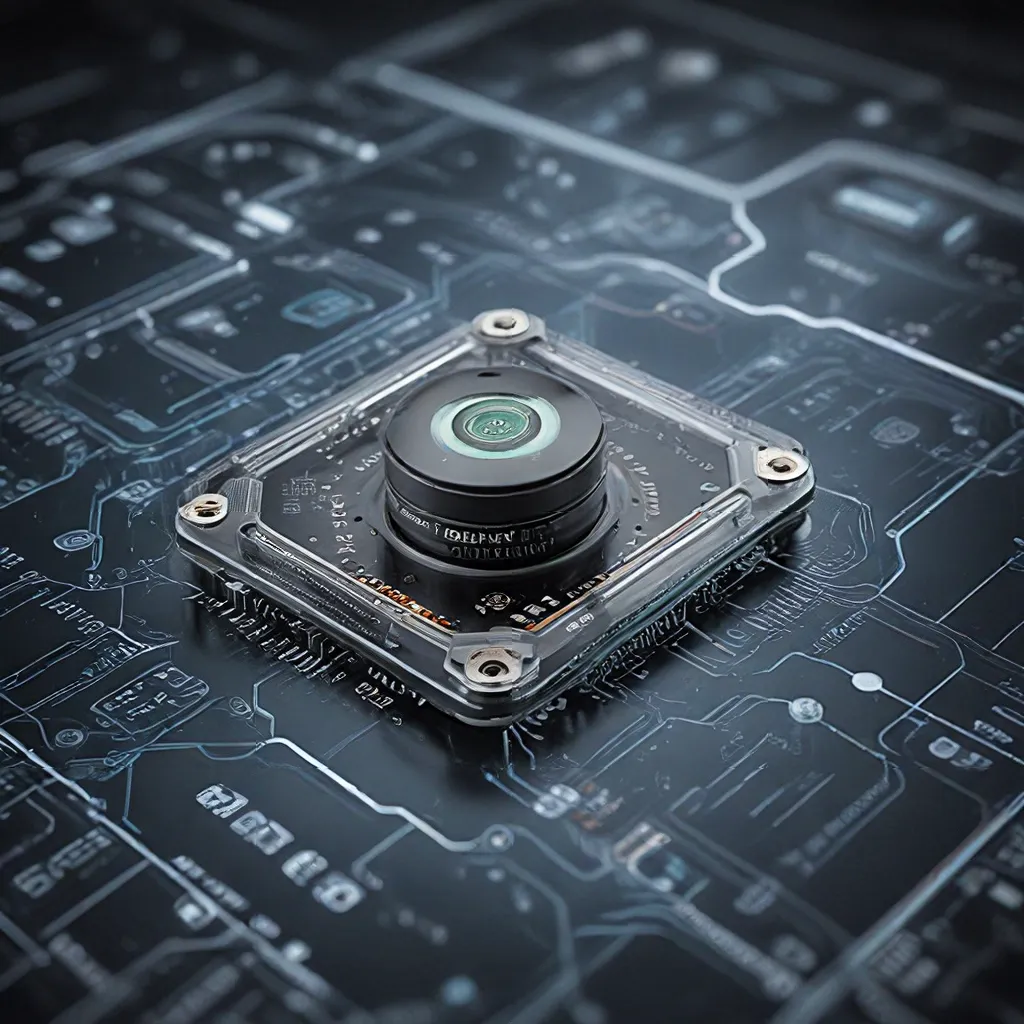
As the world becomes increasingly connected through the Internet of Things (IoT), the role of sensor networks has grown exponentially. These intricate systems, which integrate various sensing devices, data processing capabilities, and communication protocols, are the backbone of modern smart technologies. From industrial automation to environmental monitoring, sensor networks are revolutionizing the way we interact with and understand our surroundings.
Designing Robust and Reliable Sensor Networks
At the heart of effective sensor network design lies the sensor itself. Sensor technologies have made remarkable strides in recent years, offering enhanced accuracy, reliability, and energy efficiency. One such example is the ISM330BX, an inertial measurement unit (IMU) designed for a wide range of industrial applications, including anomaly detection in water circuits and pumps.
The ISM330BX combines a 6-axis digital gyroscope and accelerometer with embedded intelligence for condition monitoring, 3D orientation tracking, and vibration measurements. Its 3-axis accelerometer with a low-noise, wide-bandwidth 2 kHz frequency response allows it to adhere to strict ISO-10816 vibration severity standards, making it an ideal choice for robotic systems and other applications requiring precise motion sensing.
Beyond condition monitoring, the ISM330BX also features sensor fusion and low-power SFLP technology, enabling robust 3D orientation tracking and low-power operation without sacrificing accuracy. Additionally, its vibration sensing capabilities and anomaly detection for fault identification further enhance its versatility, making it a valuable component in water leak detection and other critical monitoring systems.
STMicroelectronics, a leading manufacturer of sensor technologies, has also introduced the TSC2020 current sense amplifier, designed for applications such as motor control, battery management systems, and solenoid valves. This device offers high accuracy, low offset voltage, and a wide common-mode voltage range, making it suitable for high-voltage systems. The bidirectional current sensing and high common-mode rejection provide flexibility and precise measurements, while the integrated EMI filters and wide operating temperature range ensure reliable performance in challenging environments.
Securing Sensor Networks in the IoT Landscape
As the IoT ecosystem continues to expand, the need for robust security measures in sensor networks has become paramount. Sensor data, if left unprotected, can be vulnerable to cyber attacks, leading to data breaches, unauthorized access, and potentially catastrophic consequences.
To address these concerns, sensor network designers must incorporate security protocols and encryption mechanisms that safeguard the integrity and confidentiality of the data being collected and transmitted. Secure boot, secure firmware updates, and end-to-end encryption are just a few of the essential security features that should be integrated into sensor network architectures.
Moreover, authentication and access control mechanisms are crucial in preventing unauthorized access to sensor nodes and the broader network. Biometric authentication, two-factor authentication, and role-based access control can all contribute to enhancing the overall security posture of a sensor network.
Optimizing Energy Consumption for Sustainable Smart Systems
One of the key challenges in sensor network design is energy management. Sensor nodes, often deployed in remote or hard-to-reach locations, must be designed to operate efficiently, minimizing power consumption while maintaining reliable performance.
Advancements in low-power sensor technologies, such as the VD55G1 global shutter sensor from STMicroelectronics, have revolutionized the field of energy-efficient sensor networks. This ultra-compact, low-power image sensor is ideal for battery-powered applications like security cameras, featuring a smart auto-wake-up feature that optimizes efficiency by activating the sensor only when necessary, reducing constant power draw.
Additionally, energy harvesting technologies, which capture and convert ambient energy sources (e.g., solar, thermal, or kinetic) into usable electrical power, can greatly extend the operational lifespan of sensor nodes. By integrating these energy-harvesting solutions, sensor network designers can create self-sustaining systems that minimize the need for frequent battery replacements or wired power sources.
Enabling Intelligent Perception and Condition Monitoring
Beyond energy efficiency and security, sensor networks are also enhancing intelligent perception and condition monitoring capabilities. The STHS34PF80 uncooled infrared sensor from STMicroelectronics, for example, can detect both stationary and moving objects within an 80-degree field of view, without requiring bulky Fresnel lenses. This sensor’s high sensitivity in the 5 µm to 20 µm wavelength range and embedded detection algorithms enable accurate occupancy detection up to 4 meters away, while consuming just 10 µA at 1 Hz, promoting sustainable design.
In the realm of condition monitoring, the ISM330BX IMU’s vibration sensing capabilities, coupled with its anomaly detection and fault identification features, make it a valuable asset for industries that rely on the continuous and reliable operation of machinery and infrastructure. By monitoring and analyzing vibration patterns, sensor networks equipped with the ISM330BX can provide early warnings of impending issues, allowing for proactive maintenance and minimizing unplanned downtime.
Toward a Smarter and More Sustainable Future
As the world continues to embrace the transformative potential of the Internet of Things, sensor networks will play an increasingly crucial role in shaping the future of smart technologies. By designing secure, energy-efficient, and intelligent sensor systems, engineers and innovators can unlock new possibilities in areas ranging from industrial automation and environmental monitoring to smart cities and healthcare.
The advancements showcased by the ISM330BX, TSC2020, VD55G1, and STHS34PF80 sensors demonstrate the remarkable progress being made in the sensor network domain. These technologies, combined with robust security measures, energy-harvesting solutions, and advanced perception capabilities, pave the way for a more connected, sustainable, and responsive world.
As we move forward, the continued collaboration between sensor network experts, IoT innovators, and industry leaders will be crucial in driving the next wave of smart system development. By harnessing the power of sensor networks, we can create a future where technology seamlessly integrates with our daily lives, enhancing efficiency, sustainability, and overall quality of life.
Sensor-Networks.org is at the forefront of this transformative journey, providing a platform for the exchange of ideas, the showcasing of cutting-edge technologies, and the fostering of a vibrant community dedicated to shaping the future of sensor networks and IoT.